While many other houseplants are content with commercially available potting soil, succulents want excellent drainage, and in my opinion, store-bought succulent soil mix just does not cut it.
Discover how to quickly create a cost-effective, pest-free potting mix for thriving succulents. We’ll provide basic recipes and detailed tips to customize the mix for your plants.
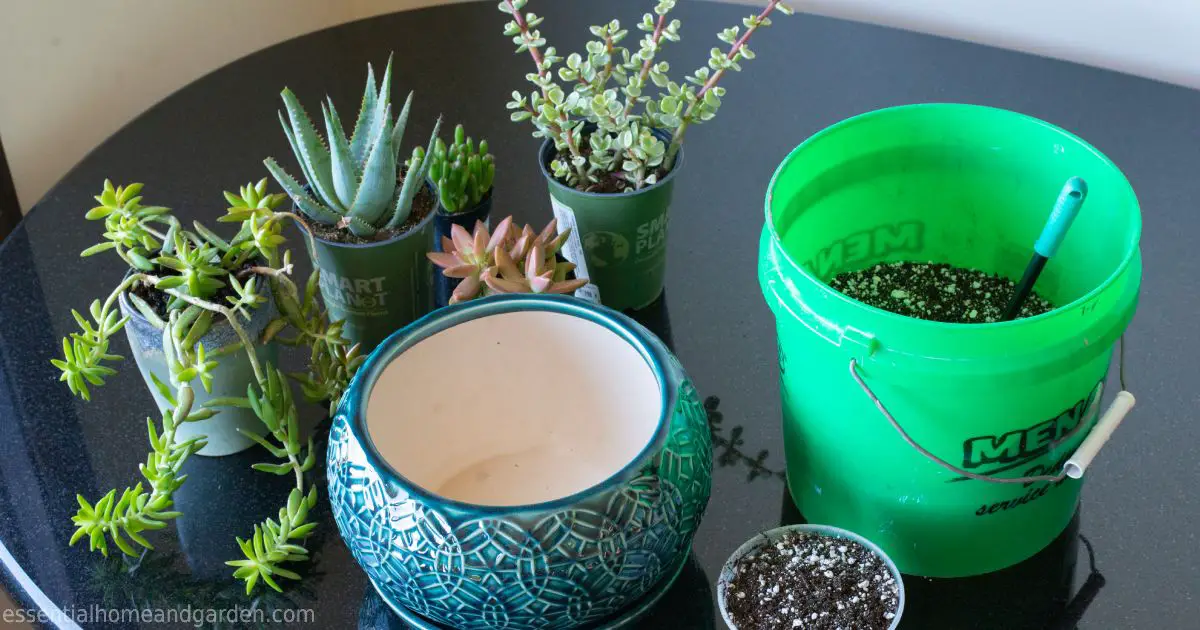
DIY Succulent Soil Recipes
Our flexible recipes use ratios, not fixed amounts, allowing you to make any quantity you need. “One part” can be any scoop size—accuracy isn’t crucial, so feel free to estimate.
Read past the recipes for a full description of each ingredient and a comprehensive guide.
Our Favorite Succulent Mix
- 1 part compost
- 1 part coconut coir – get it here
- 1 part coarse sand
- 1 part perlite – get it here
Quick Succulent Mix
- 2 parts commercially available cactus-specific potting mix – get it here
- 1 part coarse sand
- 1 part perlite – get it here
Seed Starting & Propagation Mix
- 4 parts coconut coir – get it here
- 1 part perlite – get it here
- 1 part vermiculite – get it here
Ingredients You Need to Make Succulent Potting Mix
There are many potential combinations of ingredients you could use to make your own potting mix for succulents.
In general, you will need ingredients from two overarching categories of ingredients:
- Organic matter
- Gritty amendments (perlite, vermiculite etc)
There are also some things you might think of as potential ingredients that we recommend you avoid.
Remember that the ingredients of a DIY succulent potting mix can also be used to make potting mix for other houseplants. You’ll get plenty of use from the leftovers of whatever ingredients you buy.
Organic Matter Options
Compost
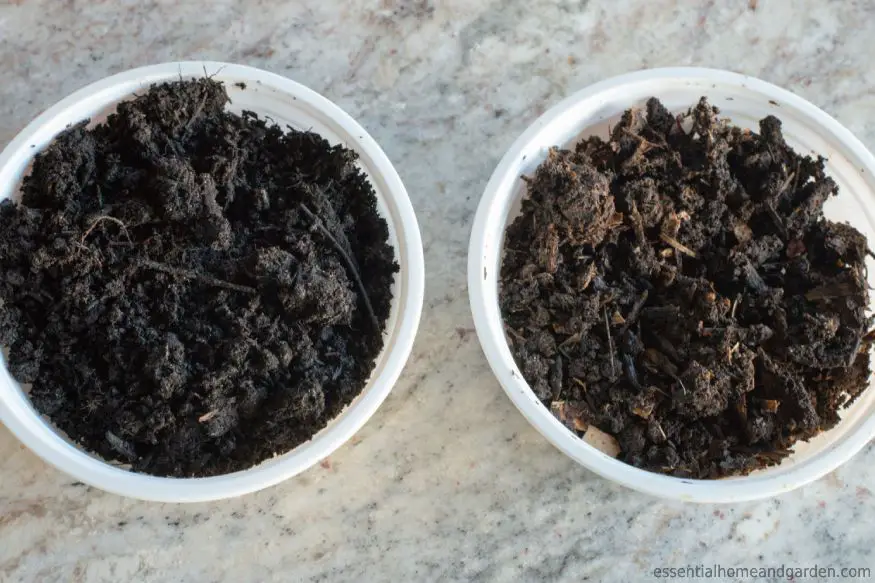
Compost is decayed organic matter (plant or animal matter) that looks somewhat like garden soil. Gardeners call it “black gold” because it is black or very dark brown, with a crumbly texture.
It may be made deliberately (for example, by adding your household vegetable waste to a plastic bin to decompose) or may occur naturally (for example, when leaves fall from trees and biodegrade until they become part of the soil).
Compost is a beneficial addition to the potting mix for several reasons:
- It contains slow-release nutrients that provide good nutrition to your plants, reducing the need for additional fertilizer
- It introduces beneficial microorganisms into the potting mix and feeds them
- It retains water in the pot for your succulent to consume over time.
Note: The ideal compost is made from your kitchen’s decomposed yard or vegetable waste.
Purchased compost often includes a substantial percentage of composted wood chips. This isn’t necessarily a problem if the wood input is balanced with nitrogen sources, but some commercially prepared composts take shortcuts so that the finished product still contains un-decomposed wood chips.
If your compost has visible bits of wood, it’s best to strain them out using a mesh screen and then add only the fine, totally decomposed part of the compost into your potting mix.
Coconut Coir
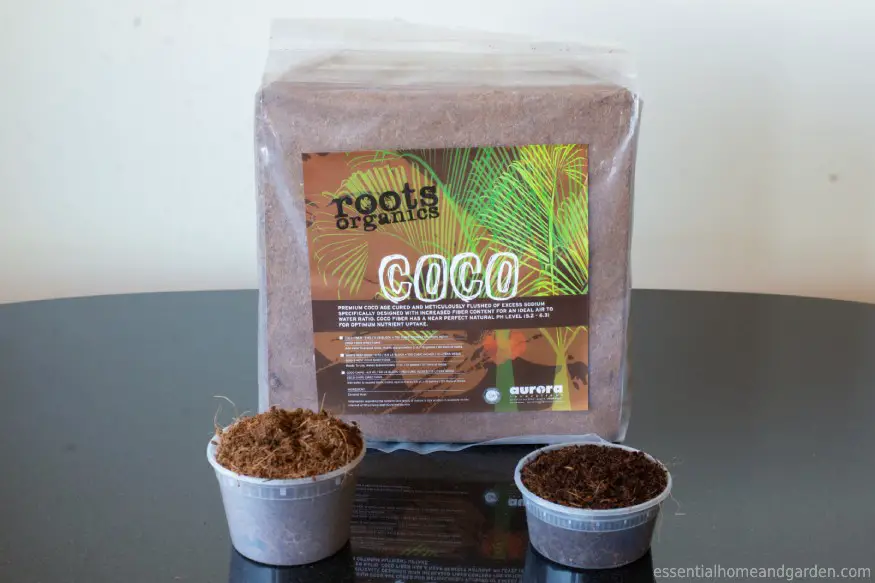
Coconut coir or “coco coir” is a lightweight soil amendment. It is made from the hulls of coconuts, which take the place of peat moss. It is a renewable resource without any environmental downsides of peat moss.
Coconut coir is an ideal ingredient to add to succulent potting mix for several reasons:
- Although it is non-hydrophobic, meaning it absorbs water, coconut coir provides outstanding aeration, which helps with drainage.
- It has a suitable pH.
- It provides some nutritional value to plants.
- It has anti-fungal properties.
Coconut coir can be purchased in two forms: large bags of loose coconut coir, similar to a bag of peat moss, or compressed into a brick. You can get it from Amazon here.
We recommend getting it in brick form because it is easier to transport and less expensive.
To reconstitute it:
- Put the brick in a wheelbarrow, large plastic tub, or other large container.
- Add water.
- As the brick absorbs water it will expand dramatically and can be broken up easily, resulting in a large quantity of loose, lightweight product.
Note: We recommend using coconut coir instead of peat moss whenever possible. It can be harder to find than peat moss, but you can often find it at gardening stores or hydroponic stores, and of course, it can be ordered online.
Peat Moss
Peat moss is available on its own or as a common ingredient in commercial potting and seed-starting mixes. It is a lightweight material harvested from peat bogs that helps aerate soil and absorb moisture.
However, peat moss has downsides beyond the environmental destruction caused by harvesting it.
If it is watered and then allowed to fully dry out, it becomes hydrophobic (meaning that it hardens and will no longer easily absorb water). This is a big problem with succulents, which prefer to dry out between waterings.
Peat moss is also quite acidic. This is not necessarily a problem when it is combined with other less acidic ingredients, as many succulents enjoy a slightly acidic soil. However, if you want to use your big bag of peat moss to make potting soil for other houseplants, you may need to amend the soil with an alkaline material such as lime.
Cactus-Blend Potting Mix
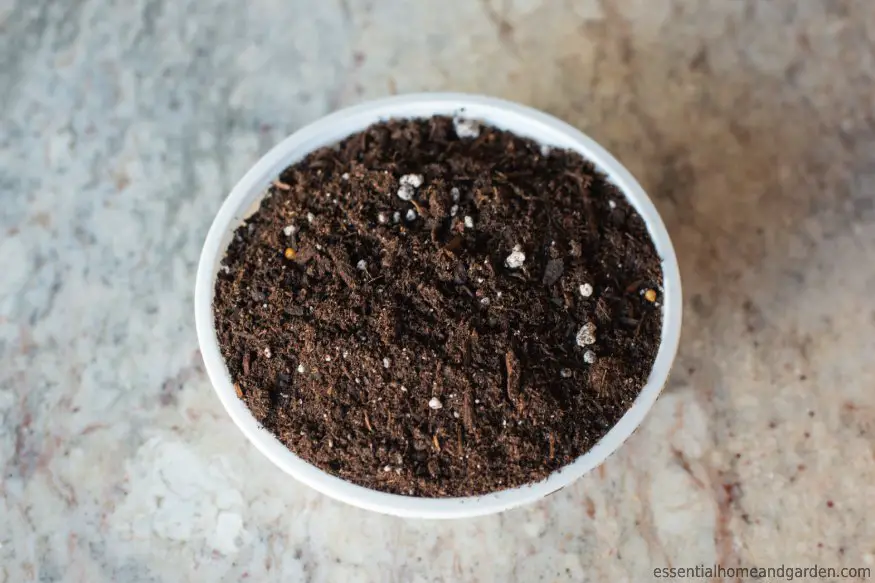
If you are willing to make your potting mix but don’t want to start from scratch, one cheat code is to start with a potting mix formulated for cactuses and add some additional gritty amendments.
The most readily available option (found at most big-box home and garden stores, hardware stores, etc.) is a cactus/palm/citrus blend made by Miracle-Gro. This mix contains peat moss, perlite, sand and fertilizer.
While we prefer to make our own, if you are looking for a quick method, then this will work. Plus, it does provide a nice lightweight base material to which you can add a gritty amendment.
Since succulents prefer that their soil dry out completely between waterings, the peat moss will eventually become hard and hydrophobic.
Note: If you use this mix, we recommend repotting more frequently if the texture of the potting mix changes noticeably over time.
Fertilizer
There is no need to fertilize succulents the first year after repotting — they will get plenty of nutrients from the fresh compost in your mix.
In subsequent years, or if you want to give them an extra boost, it’s generally sufficient to fertilize every couple of months during the growing season. The less compost you use in your potting mix, the more need your succulents will have for fertilizer.
We recommend sticking with a succulent-specific organic liquid fertilizer. One personal favorite is the succulent fertilizer made by Espoma, which is available online but is also for sale at some big-box home and garden stores.
Gritty Amendment Options
Perlite
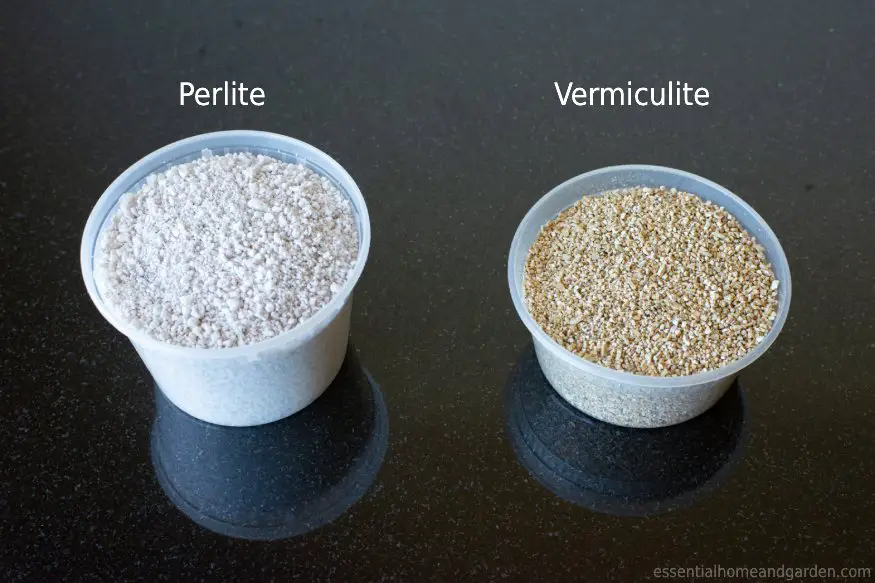
Perlite is a small, white, extremely lightweight rocky substance made of volcanic glass (typically obsidian). It is heated until it expands into an airy, low-density form, a bit like chunks of hard dry sponge.
A bag of perlite will contain pieces ranging in size from a pea to dust (some people recommend wearing a mask to avoid inhaling the dust, but it is not particularly dangerous).
Perlite is a key ingredient in almost any potting mix. It breaks up the soil substructure, creating a light, well-draining mixture. It also does not retain water. These qualities make it perfectly suited for succulent potting mix. Plus, it is inexpensive and widely available.
Pumice
Much like Perlite, pumice is a lightweight, porous, volcanic rock-derived material that adds great to the potting mix. Like perlite, it is great for drainage.
One additional benefit of pumice is that it absorbs some moisture. This can be a benefit if you have a succulent planted in a pot without a drainage hole. In that situation, if you over-water, the pumice can soak up some of the excess water, reducing the likelihood of drowning your plant’s roots.
Pumice tends to be more expensive than perlite. It is also more difficult to find in stores, but it is readily available online. You can substitute pumice for the perlite in any of our recipes.
Coarse Sand
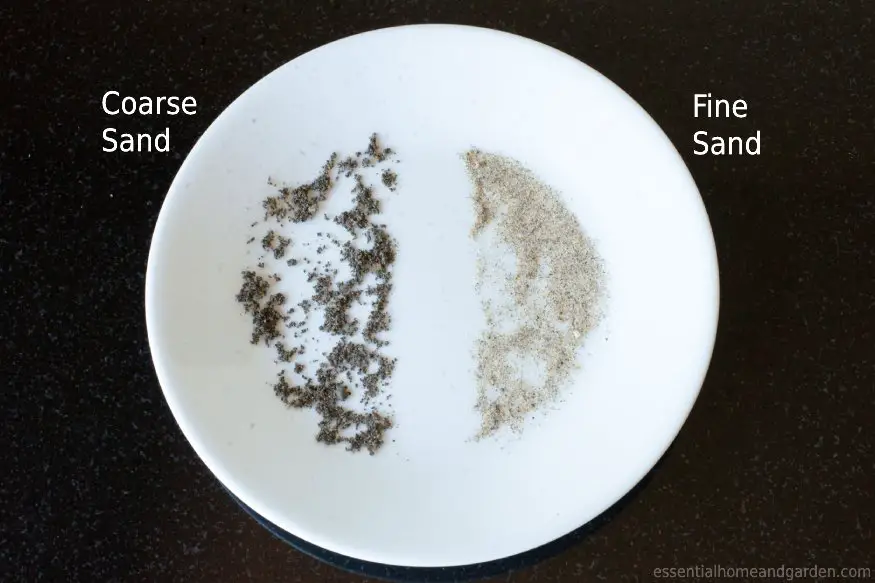
Coarse sand is just what it sounds like, a gritty material made of crushed quartz, sandstone, or granite. It is also known as “sharp sand,” “horticultural sand,” or “builders sand,” and at my local hardware store it is called “all purpose sand,” but the bag describes it as coarse.
This product differs from beach sand and sandbox sand because it has a larger and rougher grit. If standard sand is similar in texture to salt, coarse sand is more like crushed peppercorns.
It provides excellent drainage in potting mix. It can also be mixed with your garden soil if you plant succulents outdoors.
Coarse sand is inexpensive and widely available at any home improvement or garden store. Since it is very heavy, we suggest buying from your nearest hardware store to save on shipping costs.
Ingredients To Avoid in Succulent Soil Mix
Garden Soil
One of the worst mistakes you can make with a succulent (or most houseplants) is filling your pot with ordinary garden soil.
Garden soil is a mixture of three primary mineral components (clay, sand, and silt), organic matter, air, and water. The ratio of clay, sand, and silt largely determines the texture of your soil.
Note: Even outdoor garden soil is far too high for succulents in clay and organic matter. High levels of clay, in particular, makes soil hard and poorly-draining. This ratio will lead to root rot and other problems for your succulents.
If you plant succulents in your yard, you will likely want to amend the soil with sand, rocks, or other gritty amendments first.
Ordinary Potting Mix
Standard potting mix from your local garden store is not a great choice for your succulents. It is not as bad as garden soil, but is not ideally suited for succulents.
One problem is that it has too high a percentage of organic matter.
This creates three potential problems:
- The excess organic matter retains water, which can cause succulents to develop root rot.
- The mix may contain large amounts of chemical fertilizers unsuitable for succulents (such as high-nitrogen fertilizers).
- Commercial potting mixes may not specify their pH, and may not be sufficiently acidic for your succulent.
If you’re desperate to pot a succulent and can’t access any better options, you can use ordinary potting mix instead of the cacti-specific potting mix in the Shortcut Succulent Mix recipe above. However, you should modify the recipe by decreasing the amount of potting mix relative to the sand and pumice (try a ratio of 1:1:1 instead of 2:1:1).
Vermiculite
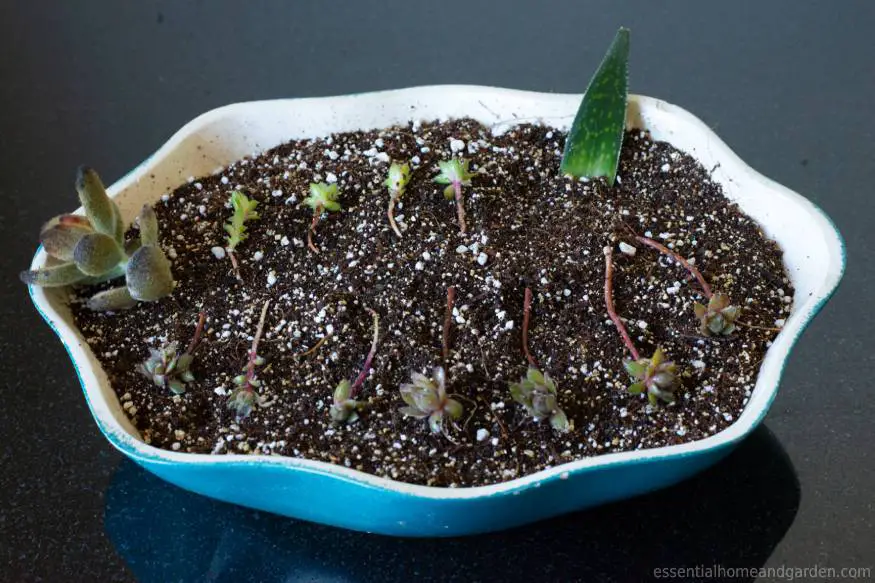
Vermiculite is a common ingredient in potting mixes and is sometimes confused with perlite. Like perlite, vermiculite is created by exposing a mineral substance to extreme heat, transforming it into a useful product for aerating potting mix.
Note: The key difference between vermiculite and perlite is that vermiculite retains water and nutrients, while perlite does not. That means it is not as good for succulents as other plants.
However, vermiculite is a great product in one of our recipes, a mix meant for succulent seed starting and propagation. This is because newly propagated leaf and stem cuttings get most of their water and nutritional needs by drawing them from the cutting rather than the soil.
Including some vermiculite in the mix allows you to propagate the cuttings into already-damp soil and avoid watering them for the first couple of weeks. The soil will retain enough moisture to encourage root growth without adding water. More water can interfere with the formation of a callus or otherwise damage your cuttings.
Fine Sand
You might think that if coarse sand is good for potting mix, fine sand would also be… well… fine. But fine sand is not a great substitute for coarse sand.
Coarse sand is not just larger than its more refined cousin, it is more irregular in shape. This irregularity prevents the individual pieces of sand from nestling up close to each other.
In other words, grains of coarse sand create air gaps in the soil, whereas grains of fine sand tend to fill gaps in the soil. These gaps are beneficial in terms of both aeration and creating drainage, so stick with coarse sand.
Bark Chips (And Other Wood Products)
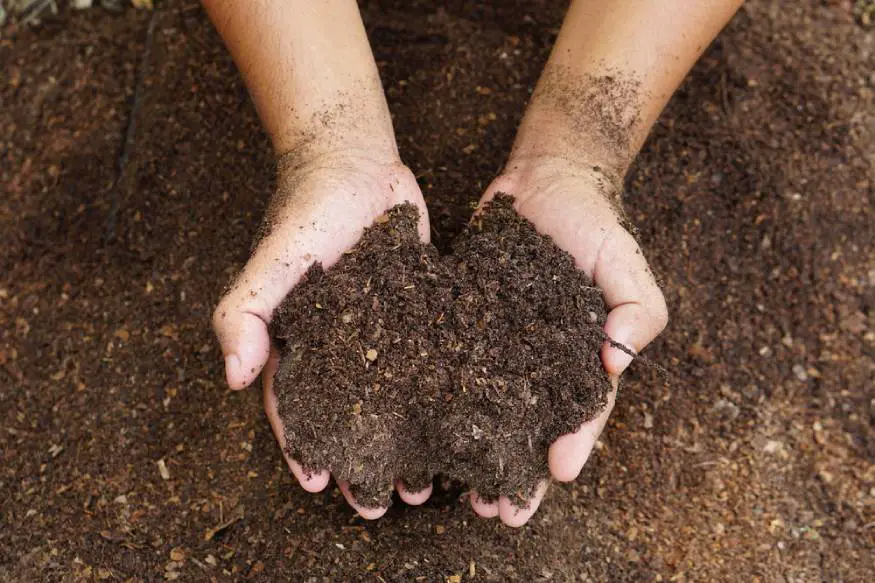
Gardeners have many good uses for wood and bark chips, but succulents are not one of them. Avoid wood for mulch for potted succulents because of its tendency to retain water and eventually mold.
Wood chips in the potting mix is also a bad idea. They retain water, but there’s another problem. As it decomposes, the wood uses up the nitrogen in your potting mix, necessitating more fertilizer.
Note: Don’t deliberately add wood chips to your potted succulents. If you are using compost with chunks of wood still visible in it, we recommend straining them out before adding the sieved compost to your potting mix.
Rocks or Pieces of Broken Flower Pots
Gardeners have been putting gravel or chunks of broken terra cotta flower pots under the potting mix inside the bottom of their planters for centuries.
The theory was that this layer would create better drainage by opening up space around the drainage hole. However, modern research shows that adding them has the opposite effect.
Essentially, the coarse texture in the bottom layer created by rocks or pottery pieces disrupts the vertical flow of water through the pot, trapping water that would otherwise drain out.
Another reason some people use this strategy is to prevent potting mix from falling out of the drainage hole. This shouldn’t be a problem with most pots, as the hole is small enough that a minimal amount of soil will escape.
However, if your pot has a particularly large drainage hole you would be much better off blocking it with a coffee filter or a layer or two of paper towels, allowing water to drain more freely, rather than a piece of broken pottery.
Why You Should Make Your Own Succulent Potting Mix
Homemade Potting Mix is Better For Succulents
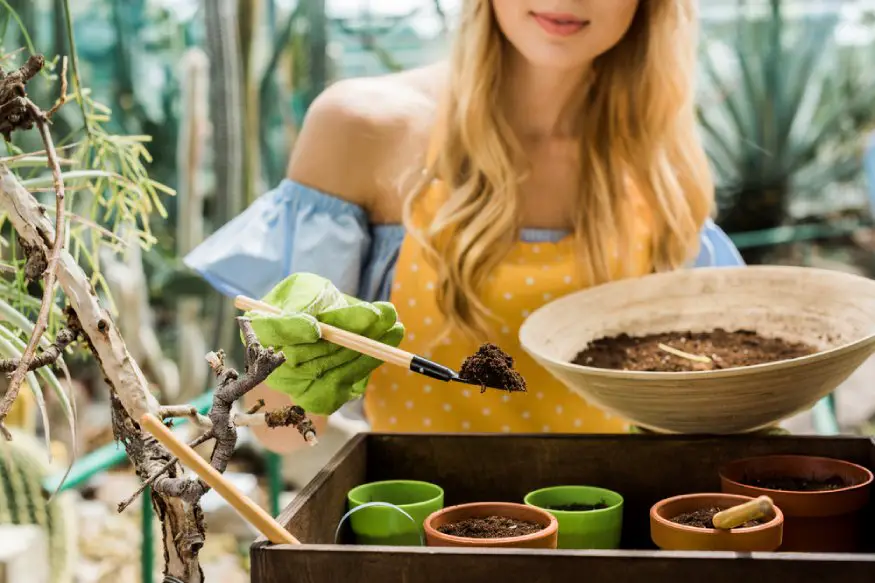
There are readily available potting mixes, such as this blend from Miracle Grow, that are advertised as being designed for succulents, cacti, palms, and citrus.
We’ve used this product in our Shortcut Soil Mix recipe, but we’ve slightly modified it because:
- Contains chemical fertilizer: There is no good reason to use chemical fertilizers on succulents. They should be able to get whatever nutrients they need from the fresh potting mix in the first year after being repotted and from occasional use of an organic liquid fertilizer in subsequent years.
- Peat can become hard: This peat-heavy mix tends to be loose and well-draining at the outset but less so over time. If you water your succulents correctly, letting them dry out each time, the peat can become hard and hydrophobic, compressing and eliminating the air pockets in the soil that your succulent needs.
- High peat ratio: This product (and other succulent mixes like it) has a very large ratio of peat to gritty amendment. Gritty amendments are essential to maintaining good drainage, especially as your plant becomes root-bound.
Note: Homemade potting mix is superior for succulents as it mimics their natural rocky soil habitat, unlike peat-heavy commercial mixes.
Homemade Potting Mix is Better For The Environment
Making your mix is eco-friendlier than peat moss-based products, which contribute to climate change through carbon release.
A great alternative is coconut coir, which does not have the harmful environmental impacts of peat moss.
Mixing your own also means you can entirely avoid chemical fertilizers. Indeed, your potted houseplants will not cause environmental destruction through runoff.
However, when you water your houseplants, the excess fertilizer drains out with the water. In many cities, wastewater is recycled, becoming drinking water again. So, keeping unnecessary chemicals out of it isn’t a bad idea.
Homemade Potting Mix is Adjustable
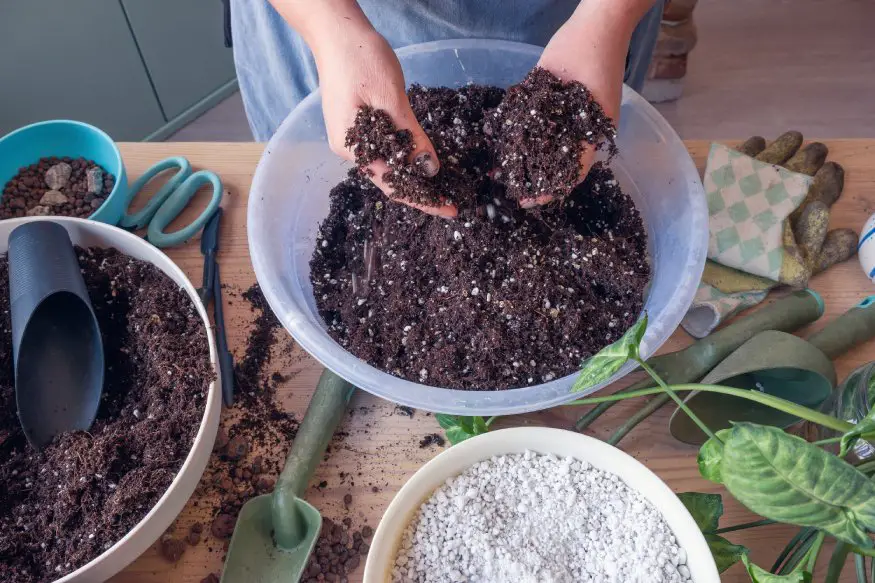
The adaptability of homemade potting mix allows you to tailor the soil to your succulents’ specific needs upon repotting.
For example, if your heaviest Coppertone sedum stems keep falling out of the pot, you can add more organic matter to give its shallow roots a slightly denser substrate to grab onto.
You can also make adjustments based on the specific plant.
For example, hens and chicks are succulents that require virtually no soil to thrive. If you are planting hens and chicks in an outdoor planter, you might want to increase the ratio of rocky material to organic matter even more dramatically than you do for typical succulents.
Homemade Potting Mix Saves You Money
If you go to a specialty store or order online, you can find some nice-looking options for succulent mix, such as this mix from Wonder Soil made with coconut coir, pumice, and earthworm castings. However, options like these are often quite expensive.
For example, this Wonder Soil product is three pounds dry (12 quarts reconstituted) for $32.00, or more $2.50 per quart.
Creating your potting mix is cost-efficient; our DIY recipe comes to roughly $0.35 per quart.
It requires a bit of up-front investment to make your mix. The ingredients are inexpensive, but most have to be purchased in large quantities.
Note: The leftovers can be stored indefinitely. So, if you have a shed or basement or somewhere else you can protect them from weather, you can hold onto the ingredients until the next time you need to repot.
Commercial Soil Options
No commercial mix matches the health benefits of a homemade one for succulents. If you must buy, use our checklist to ensure you pick the best available option.
An answer of “yes” to any of these questions generally means it is a more acceptable option, while a “no” means it is not suitable for succulents:
- Is the product marketed as being specifically suitable for cactuses or succulents?
- Does the label list coconut coir or peat moss as the first (most prevalent) ingredient?
- Does the label describe the product as a “soilless mix”?
- If the product contains fertilizers, are they organic fertilizers such as compost, earthworm castings, manure, or kelp-based fertilizer, for example (as opposed to chemical fertilizers)?
- When you lift the bag of dry potting mix, is it lighter than you would expect given the size?
- Looking at the mix, can you see that it contains a substantial amount of perlite?
- Looking at the mix, does it appear fluffy (rather than dense)?
- If you pick up a handful of damp potting mix and squeeze it in your fist, then release your hand, is the potting mix still spongy and crumbly (rather than forming a compacted ball)?
Succulent Soil FAQ
How can I store extra potting mix?
Store surplus potting mix in a lidded plastic bin, away from extreme temperatures and direct sunlight—a shed works well.
Can I use my extra succulent potting mix for other houseplants?
Our succulent mix is safe for other plants, though you may need to water and fertilize more due to its lower organic content.
One easy solution is to add additional organic matter to the mix simply. You can just throw some in, no need to fuss too much about how much.
If you’re making a batch from scratch, try doubling the compost and coconut coir (two parts each), while keeping the amount of sand and perlite the same (one part each). That will produce an excellent general-purpose potting mix.
What other strategies can I try if my succulents aren’t thriving?
Even though succulents are generally low maintenance, you can do various things to help them grow happy and healthy.
- Research the type of succulent you’re growing to see if it has unusual needs (such as a lower pH level than typical succulents).
- Ensure you put your homemade potting mix in a pot suitable for succulents.
- Keep better track of your water and fertilizer routine and how your succulents respond to it
- Use our What’s Wrong With My Succulent Decision Tree, and follow our suggestions for diagnosing and treating your succulent’s symptoms.

